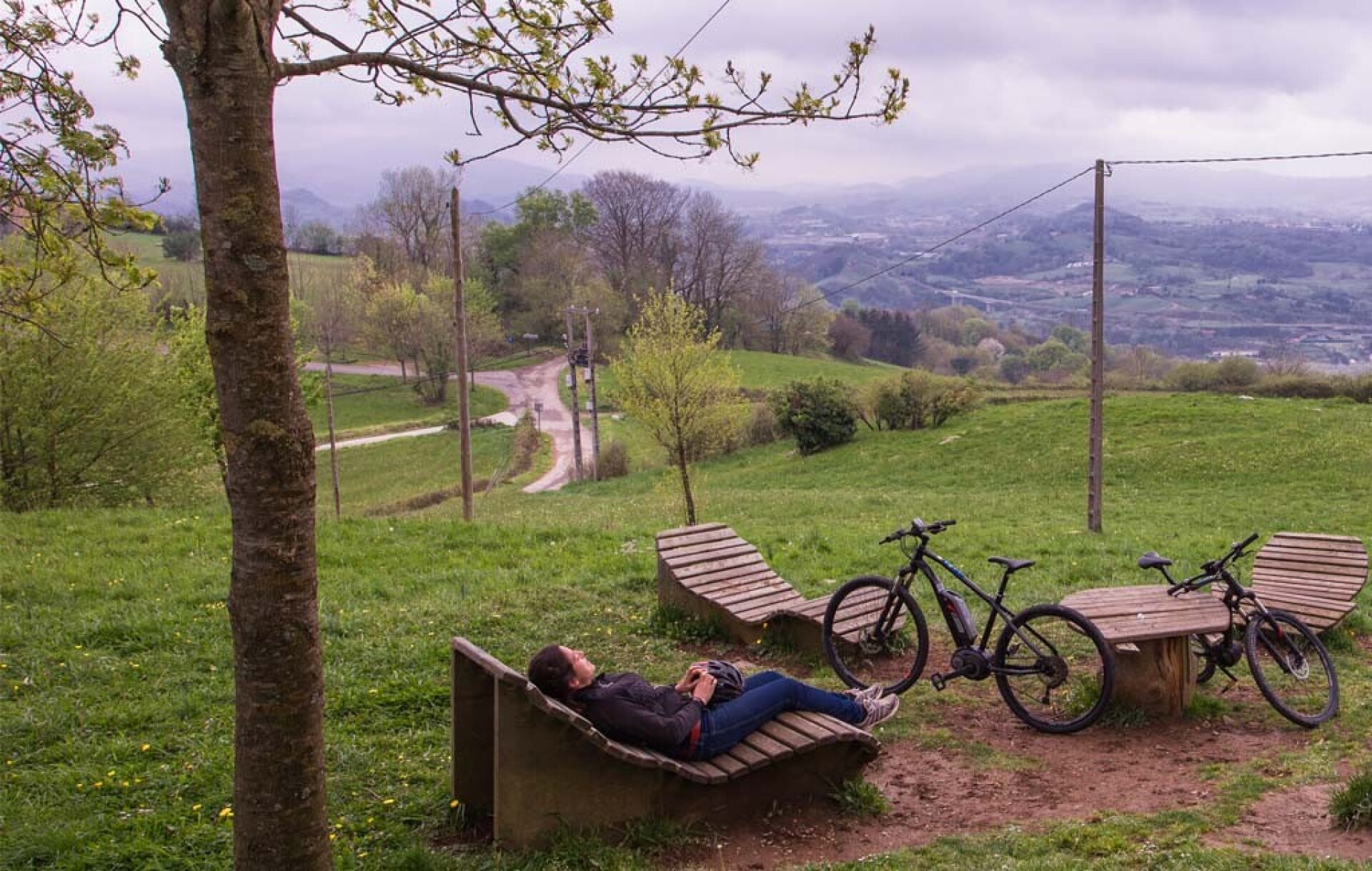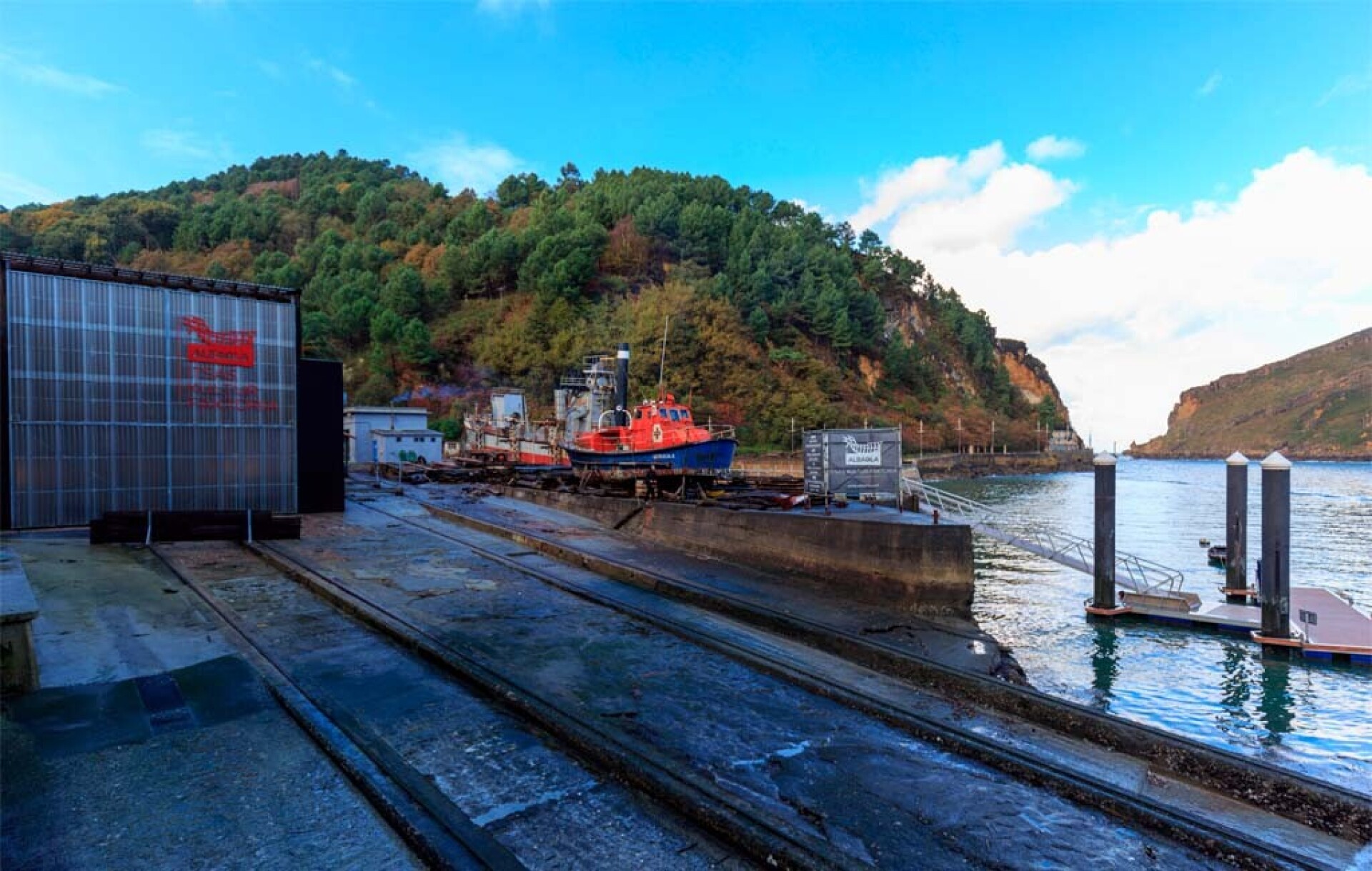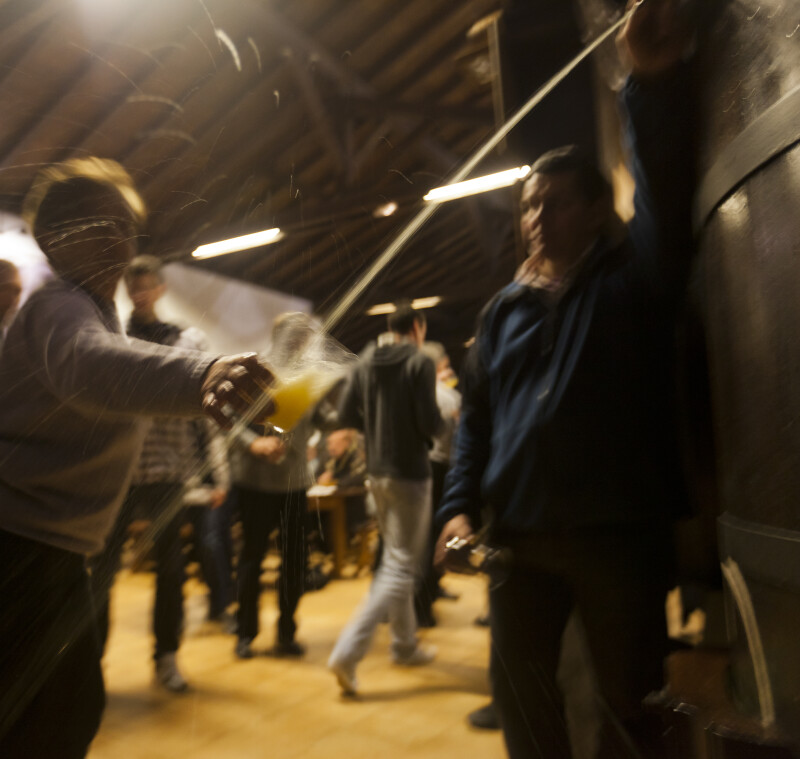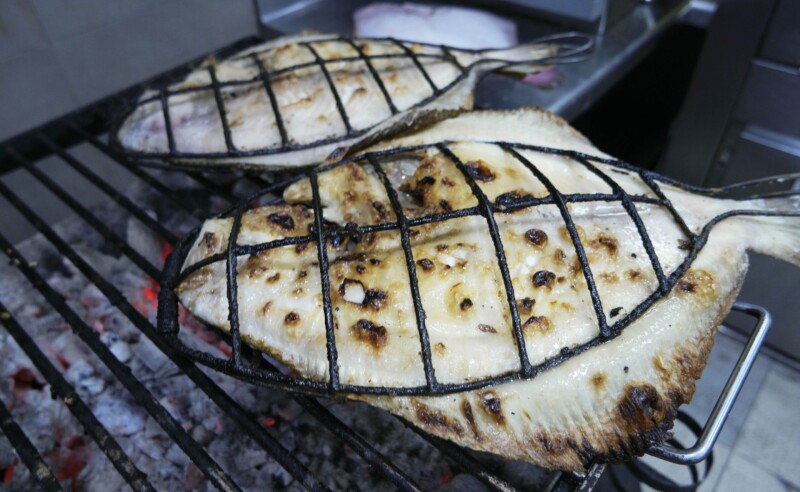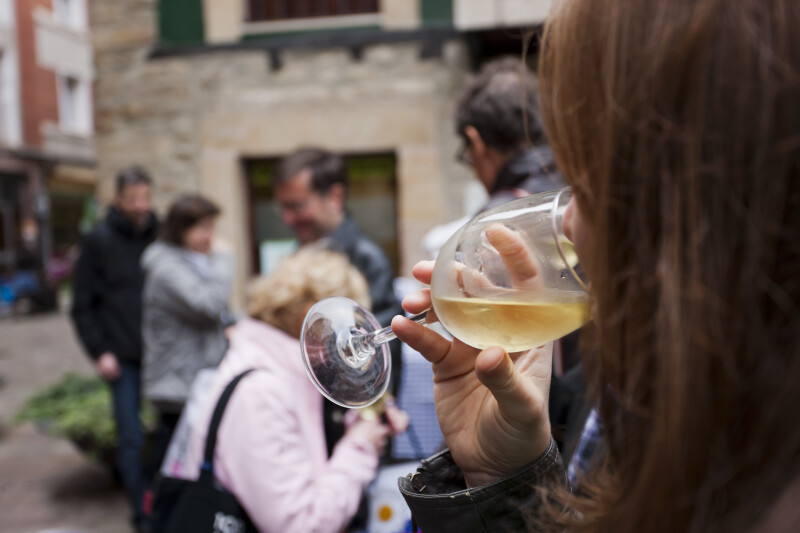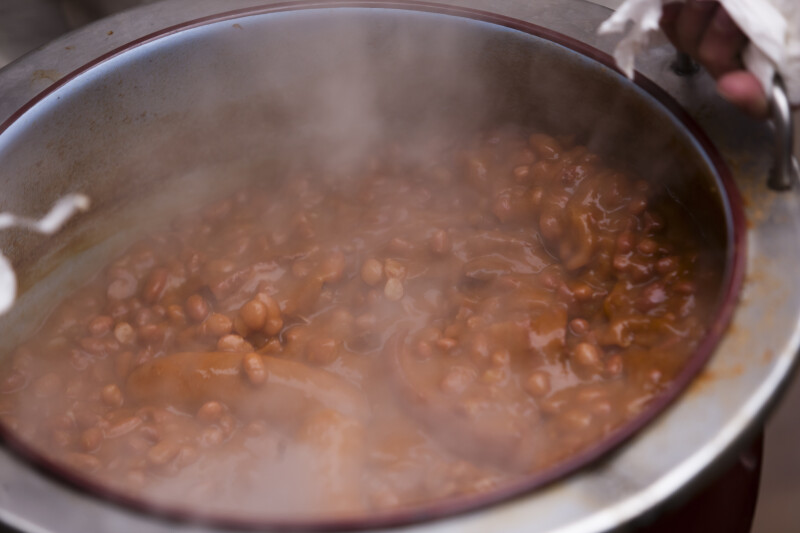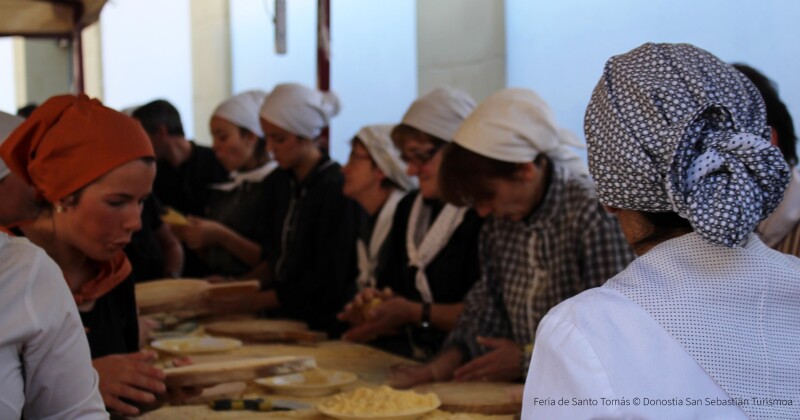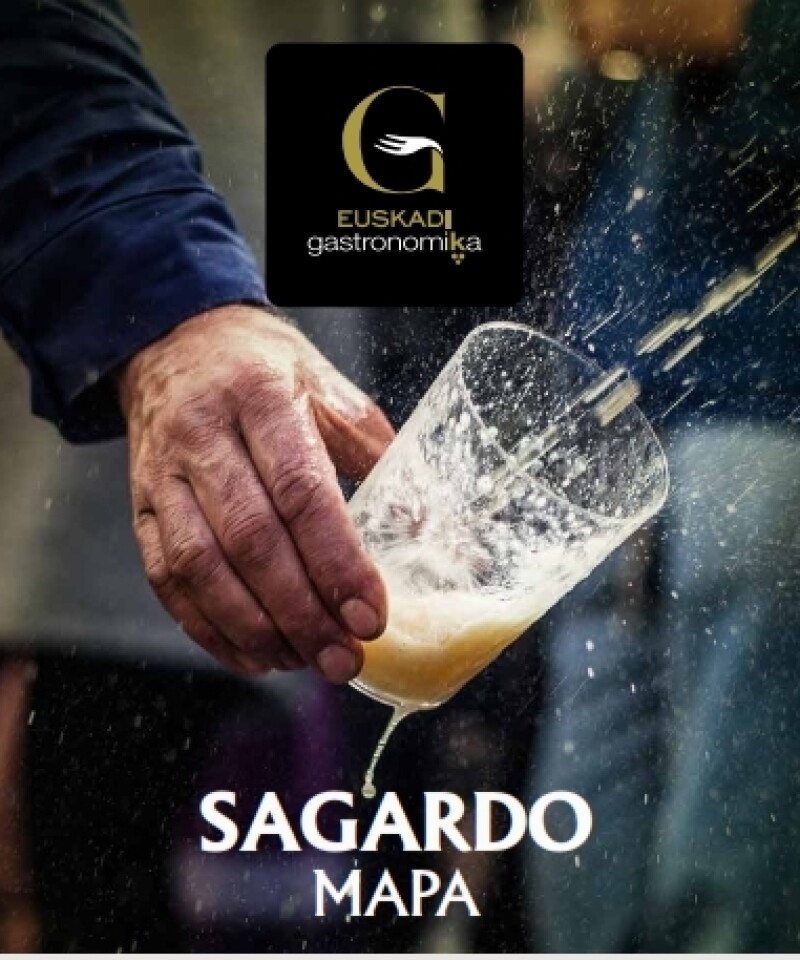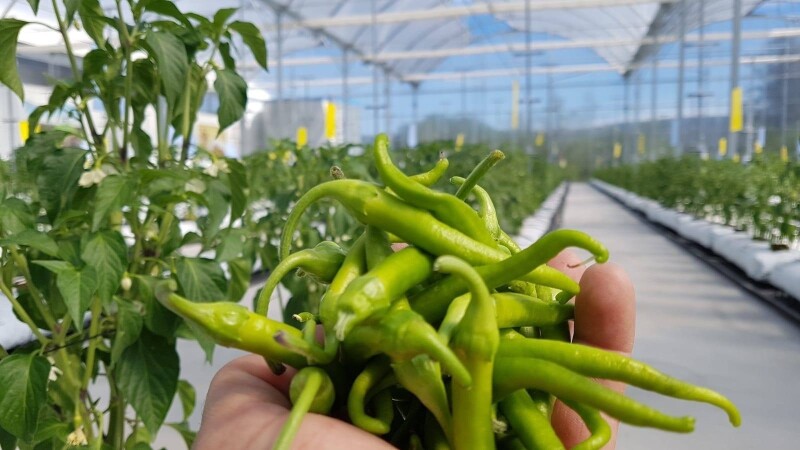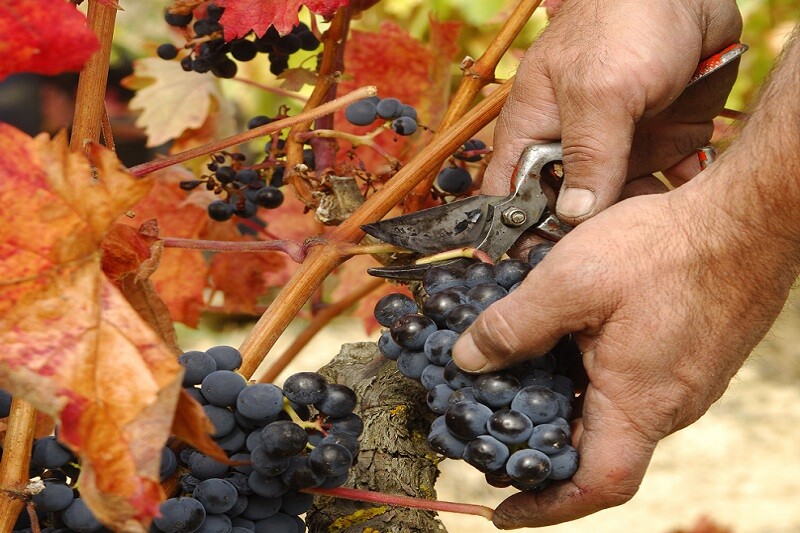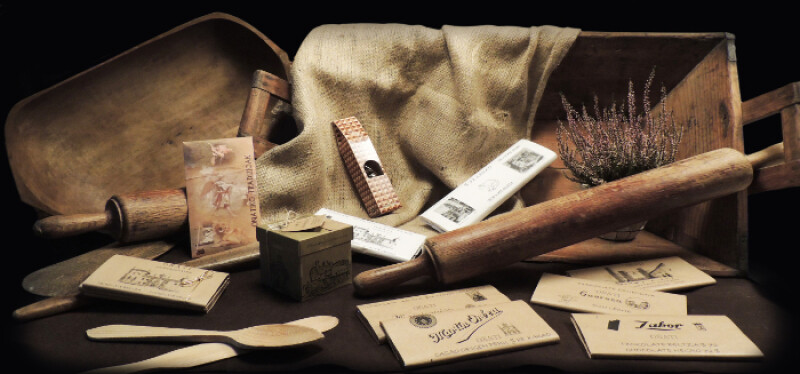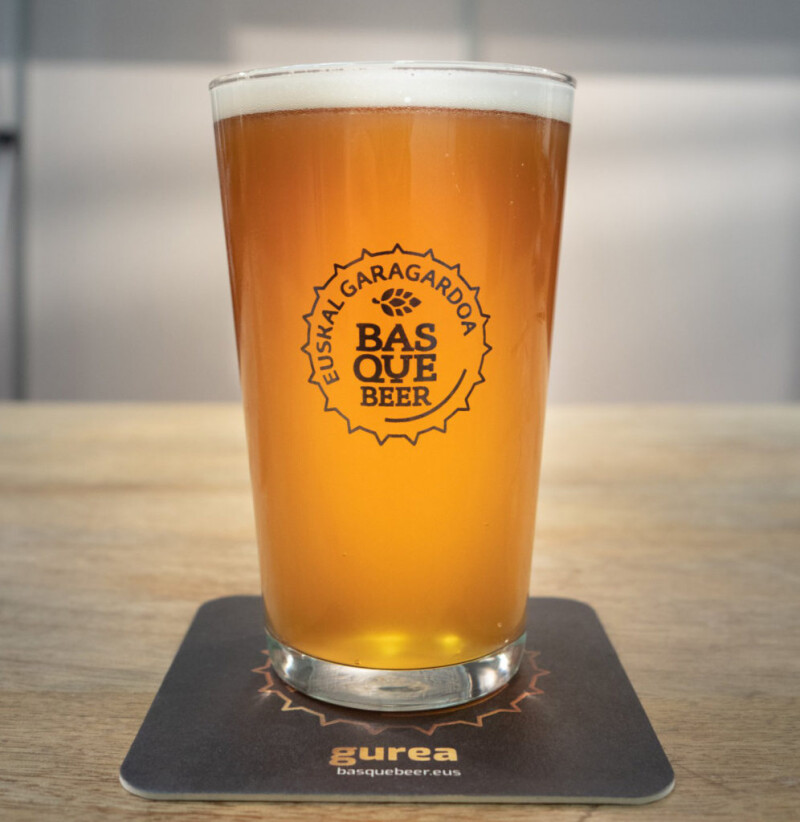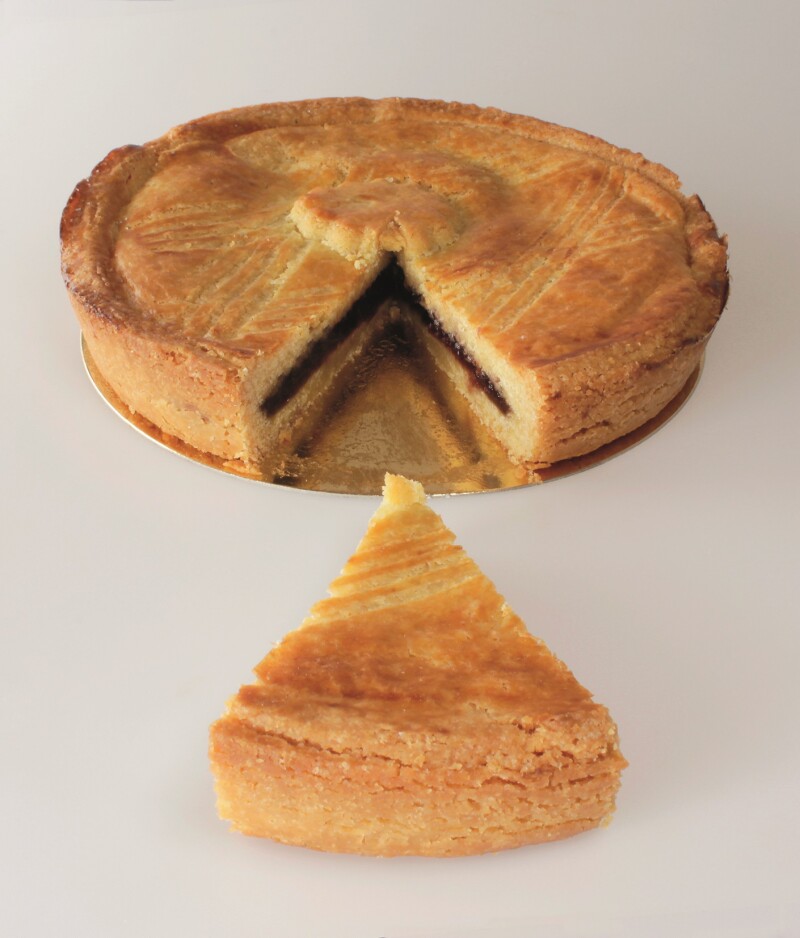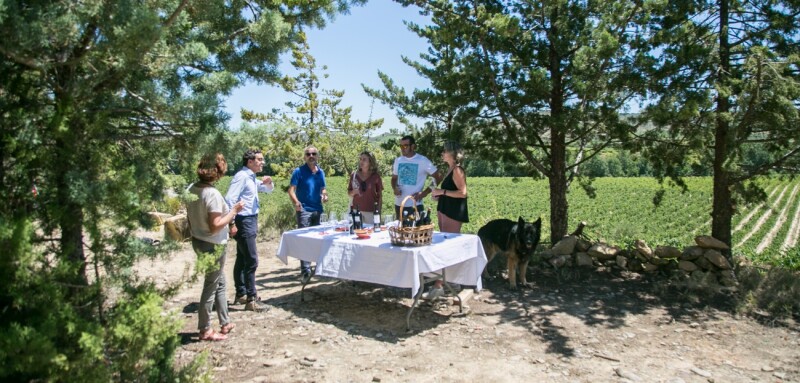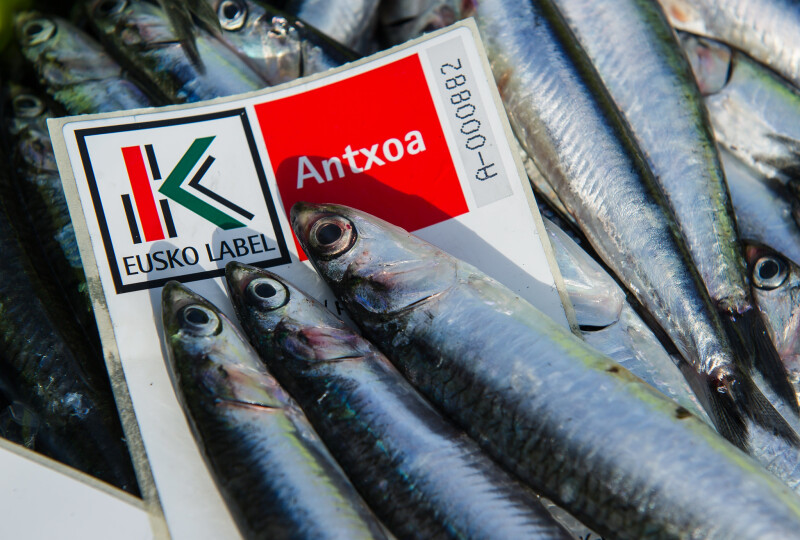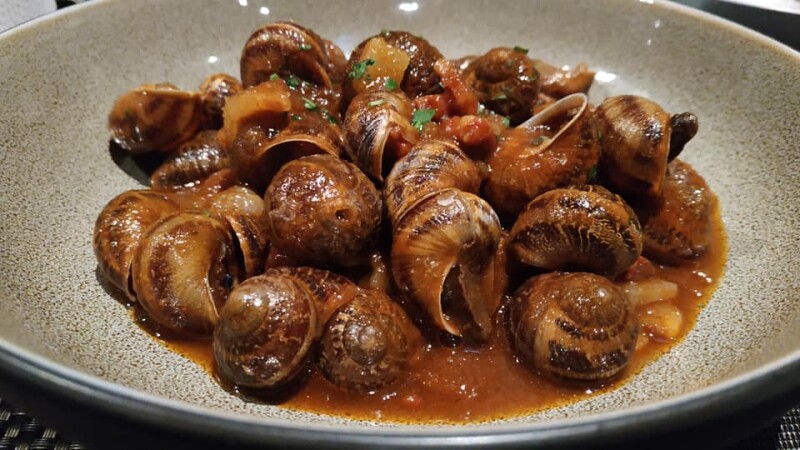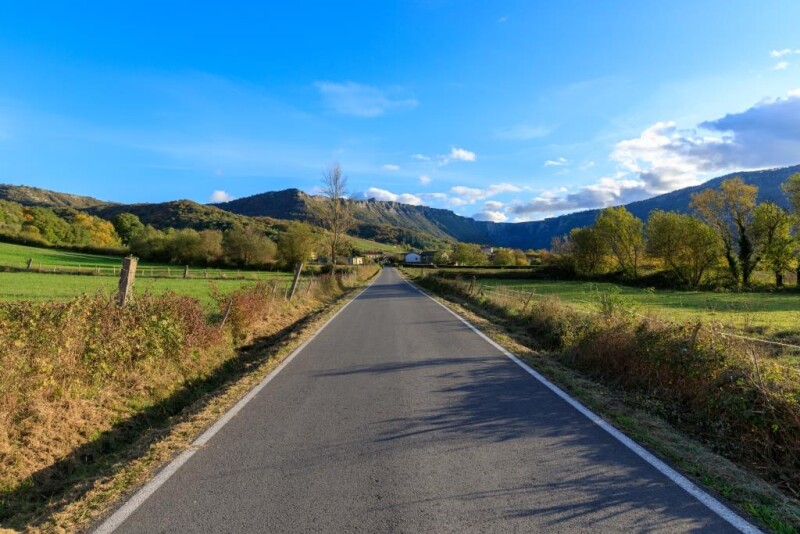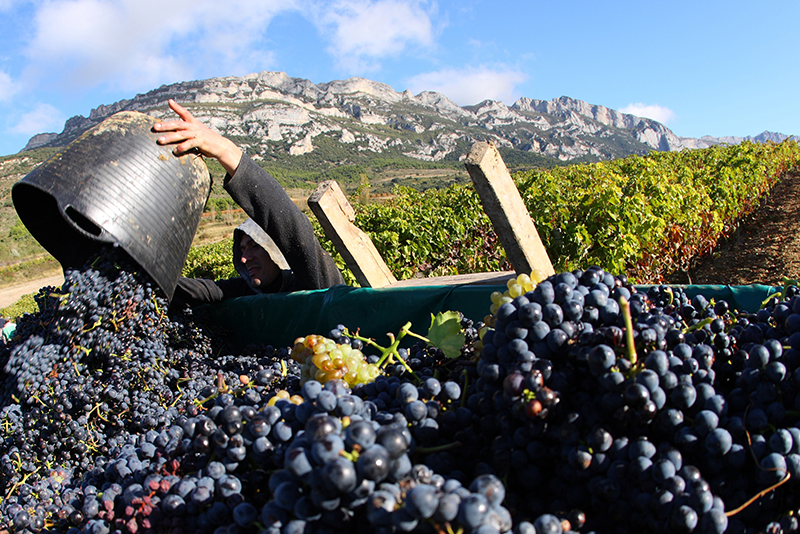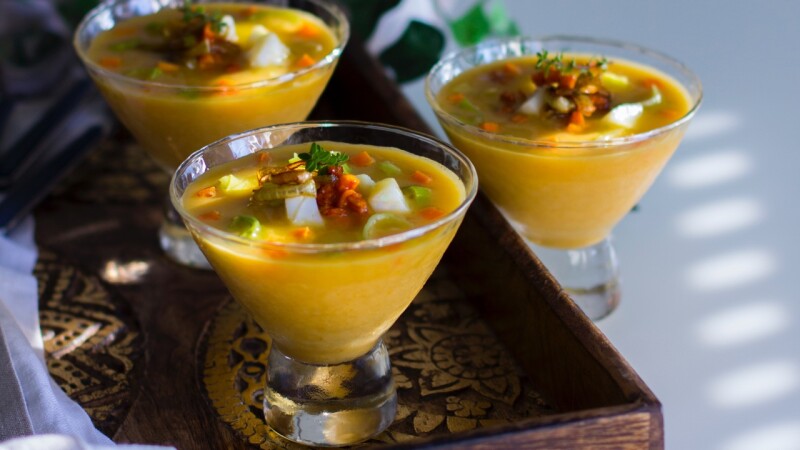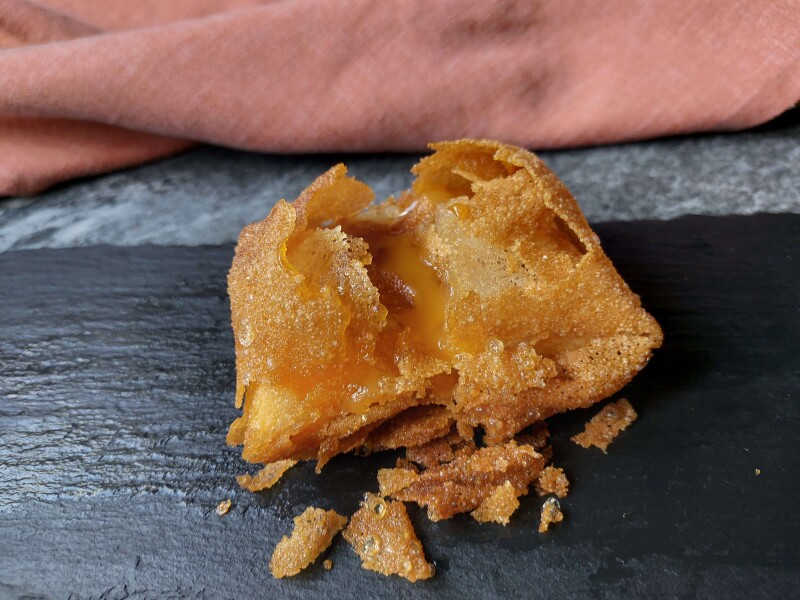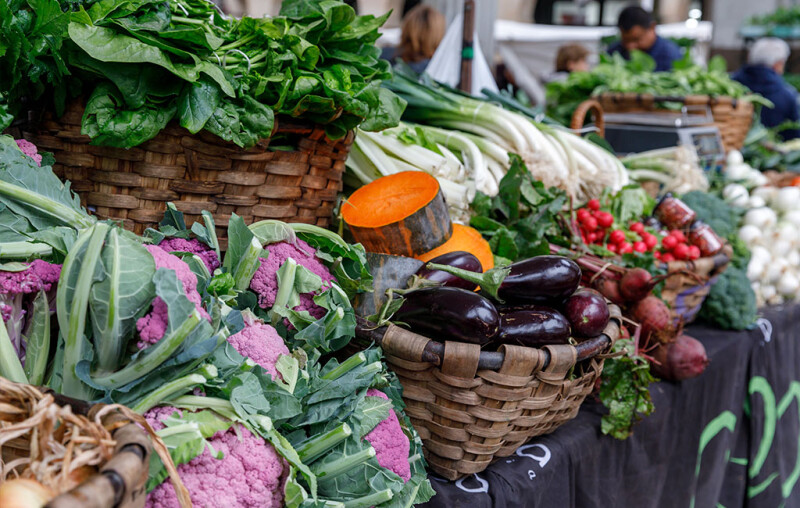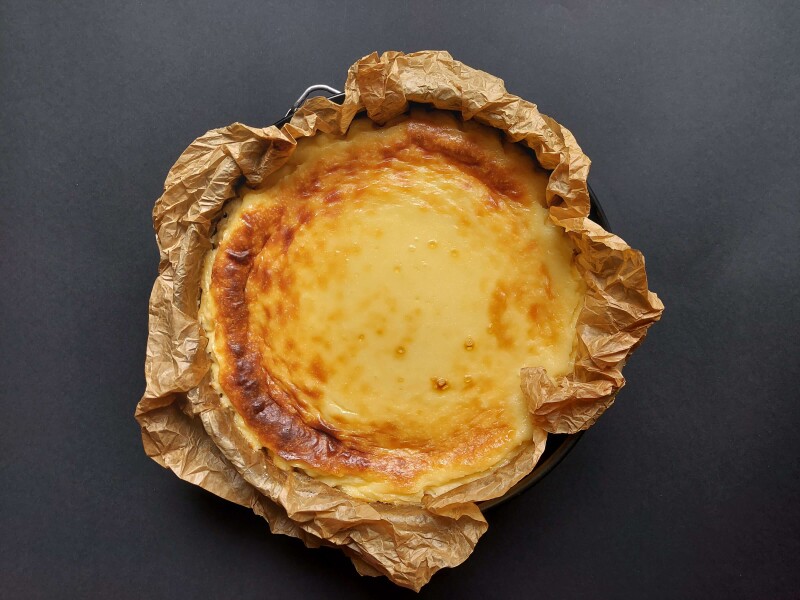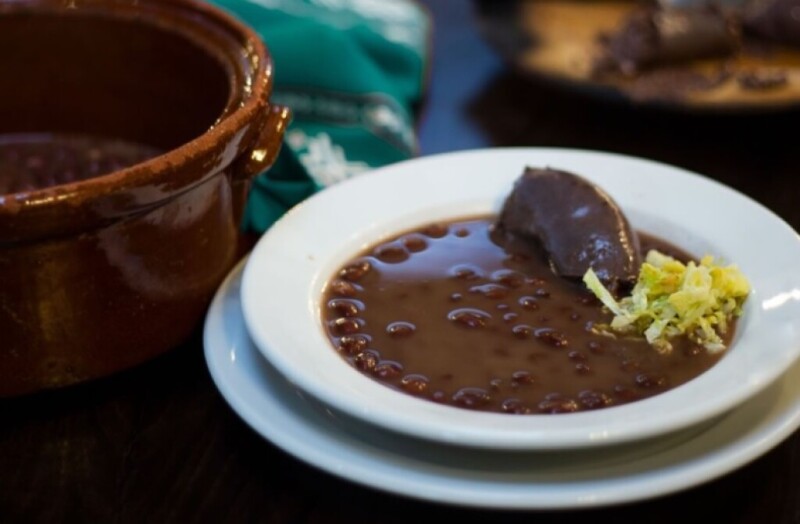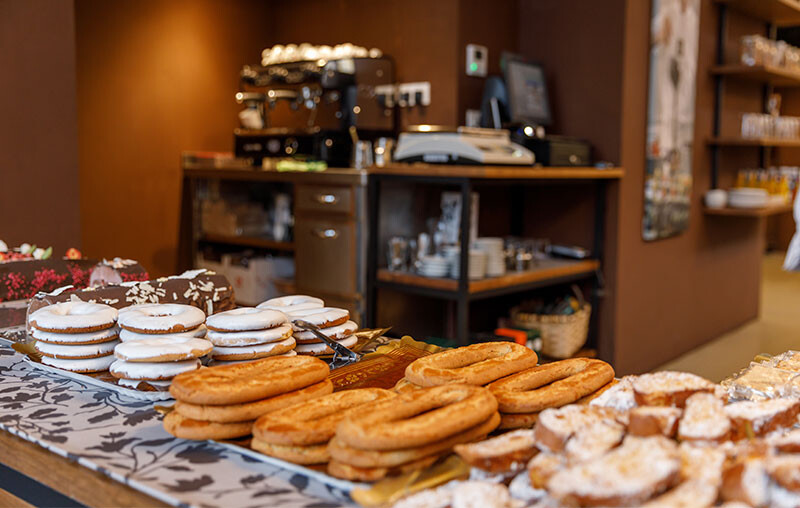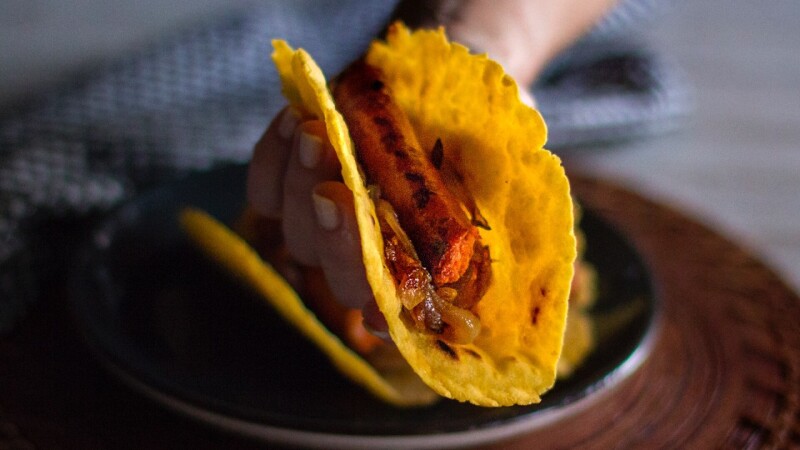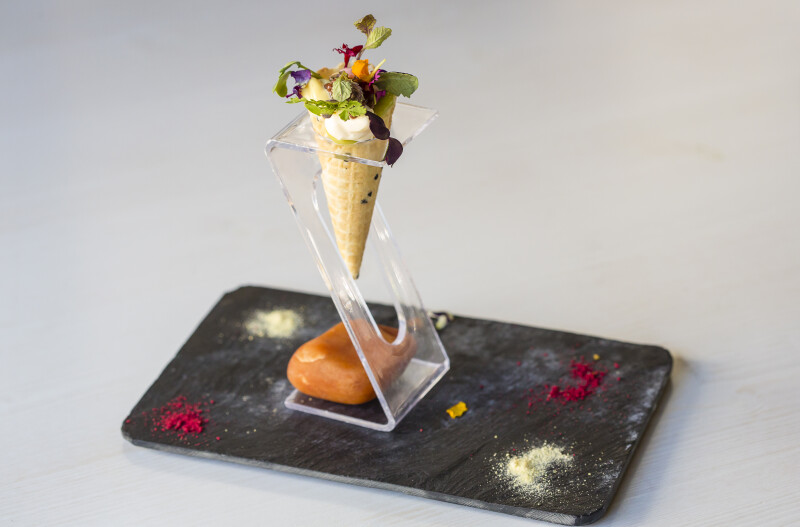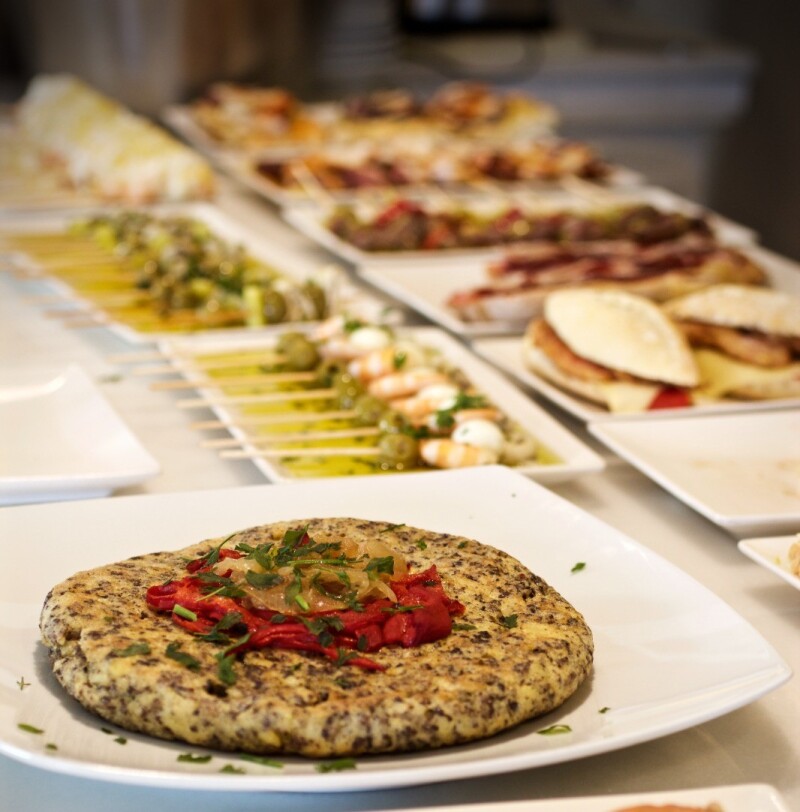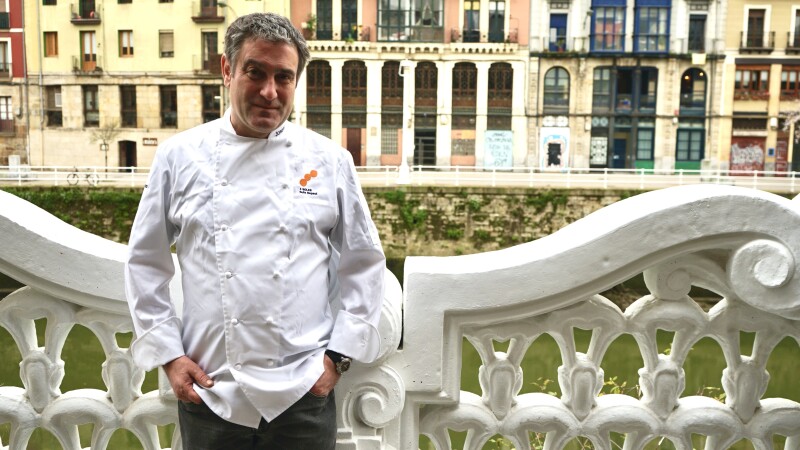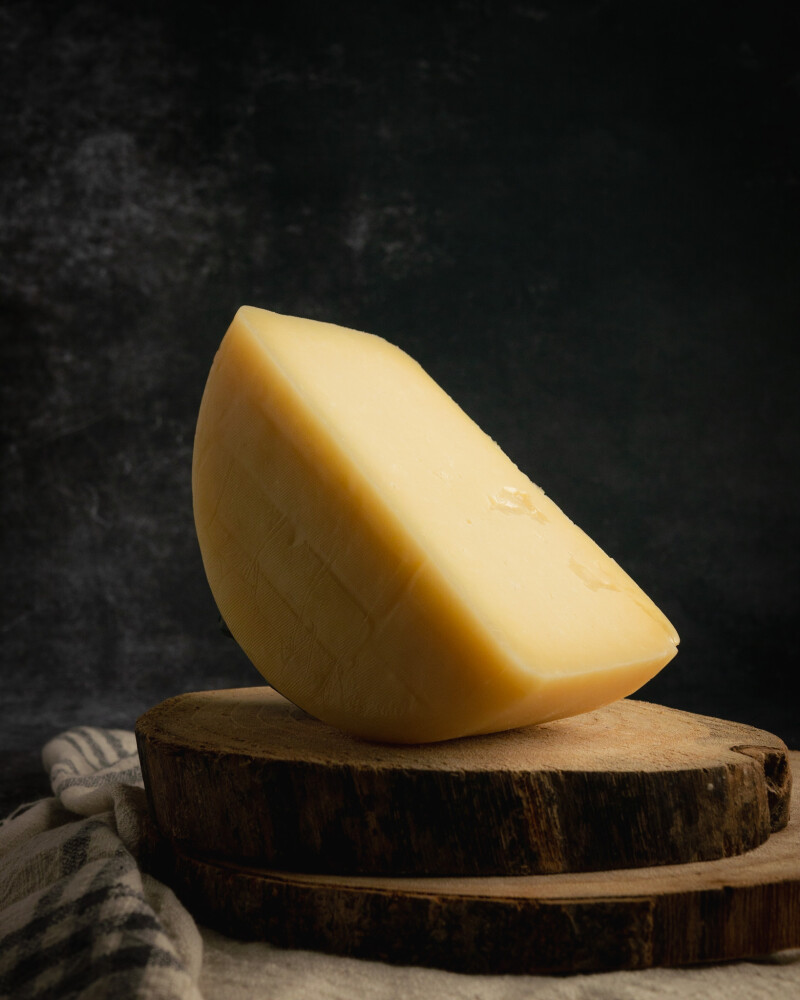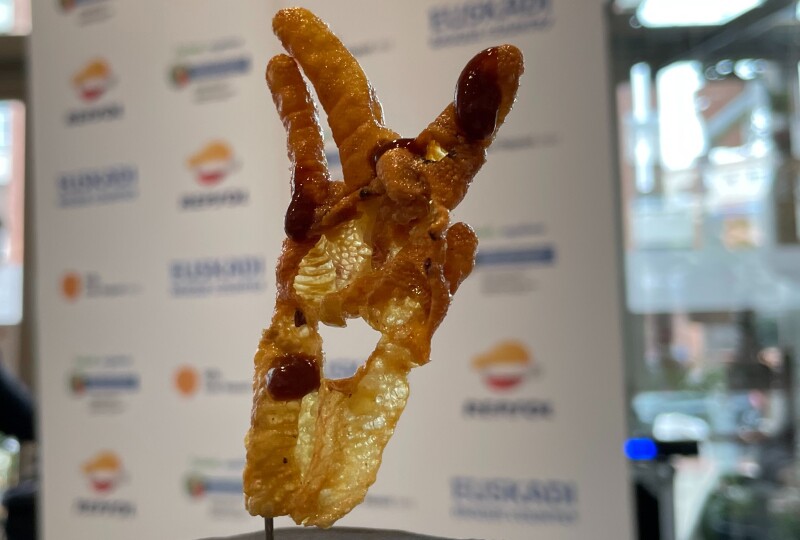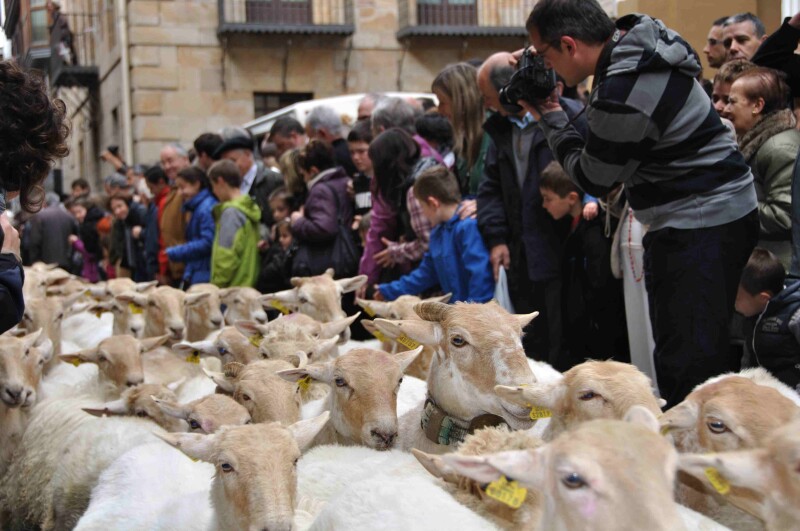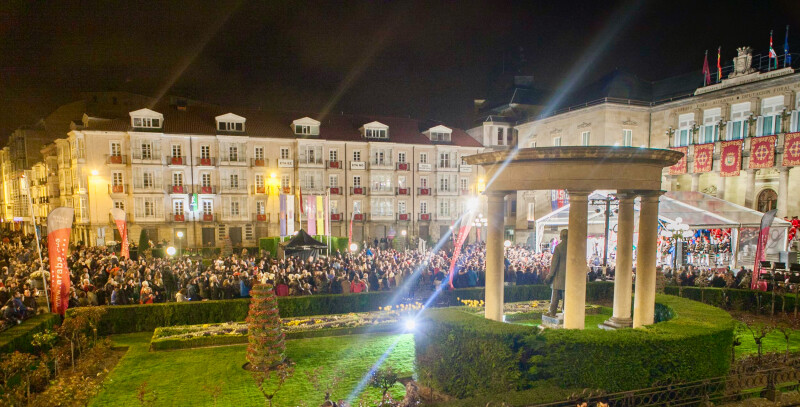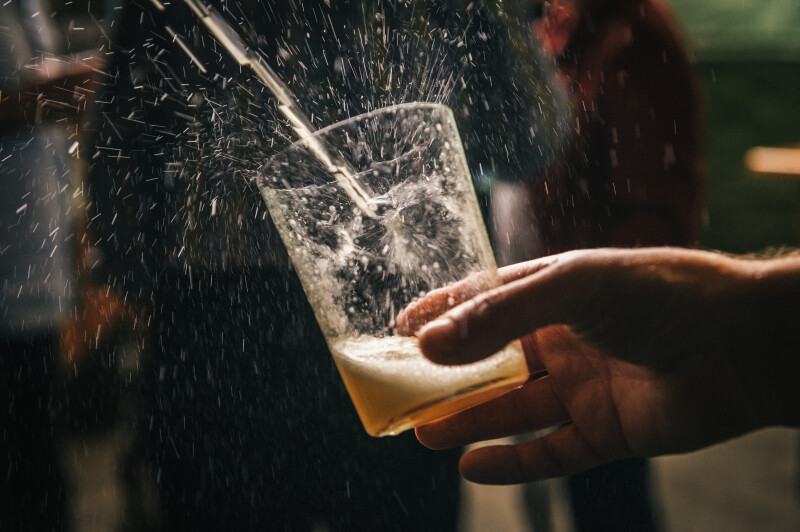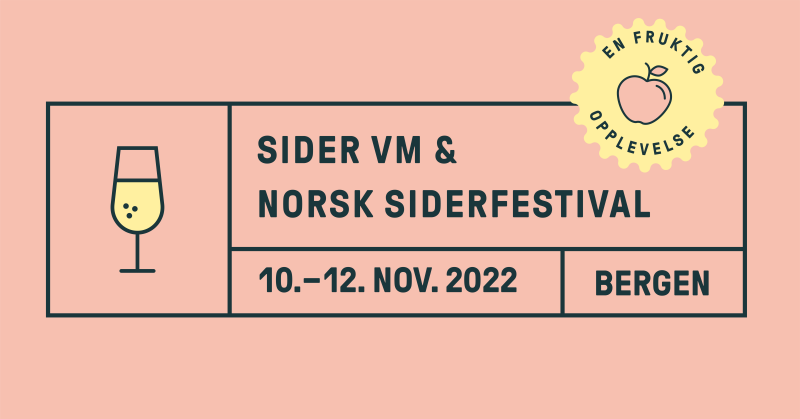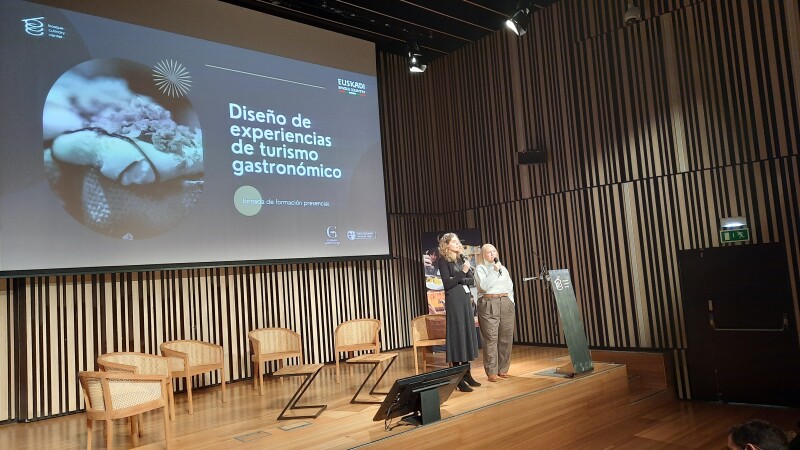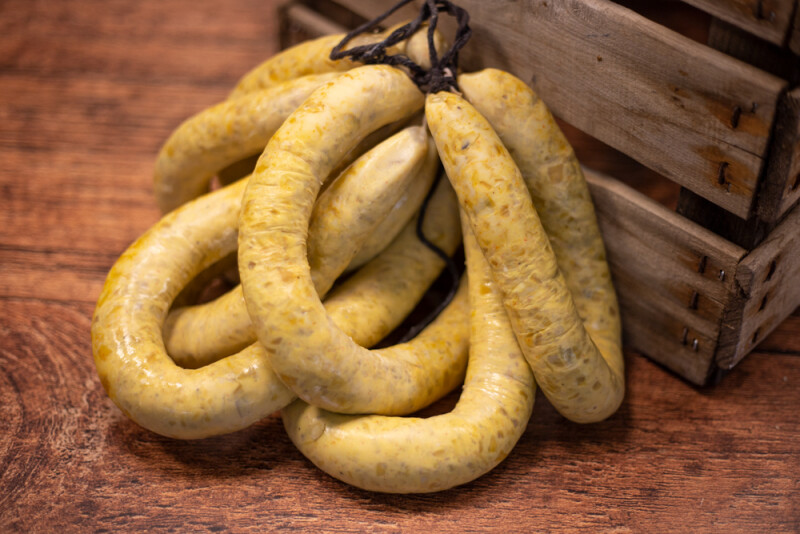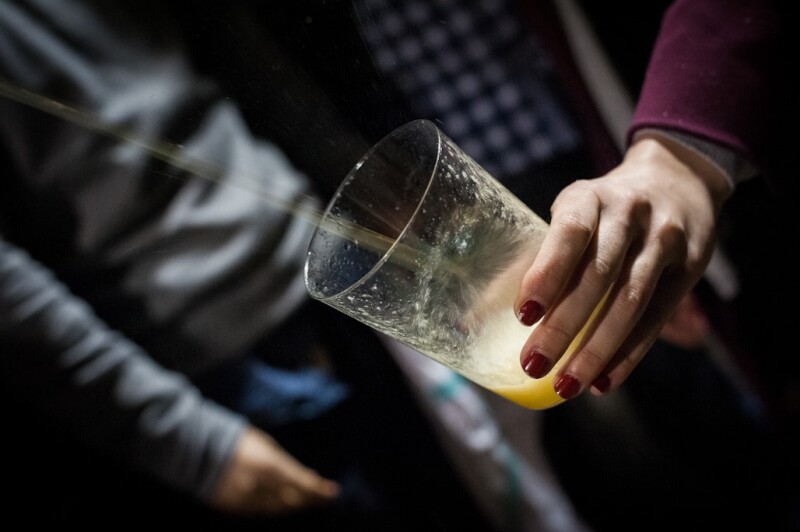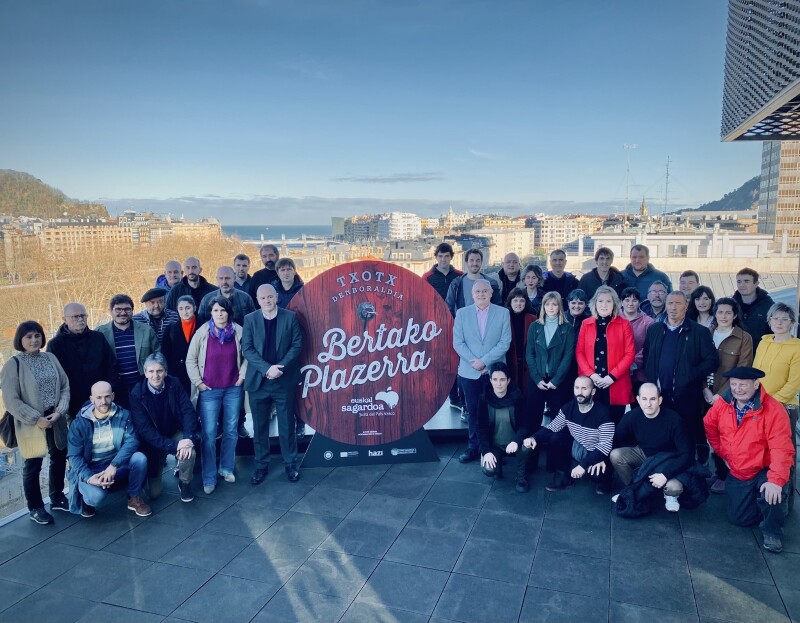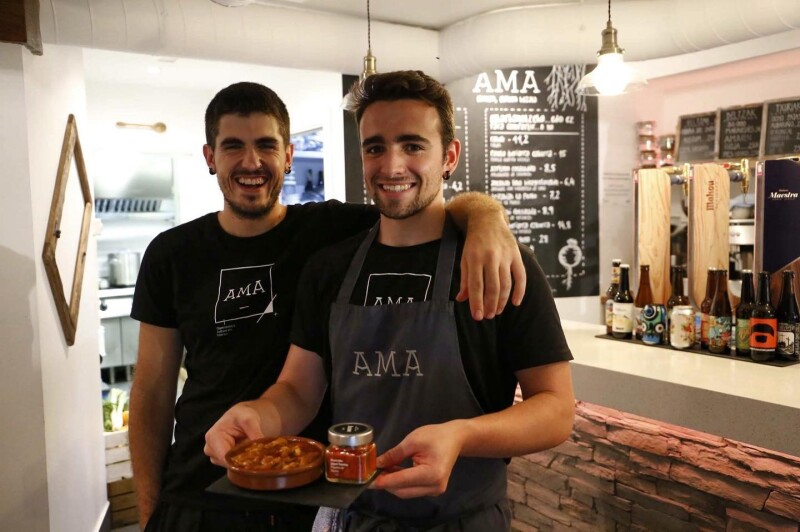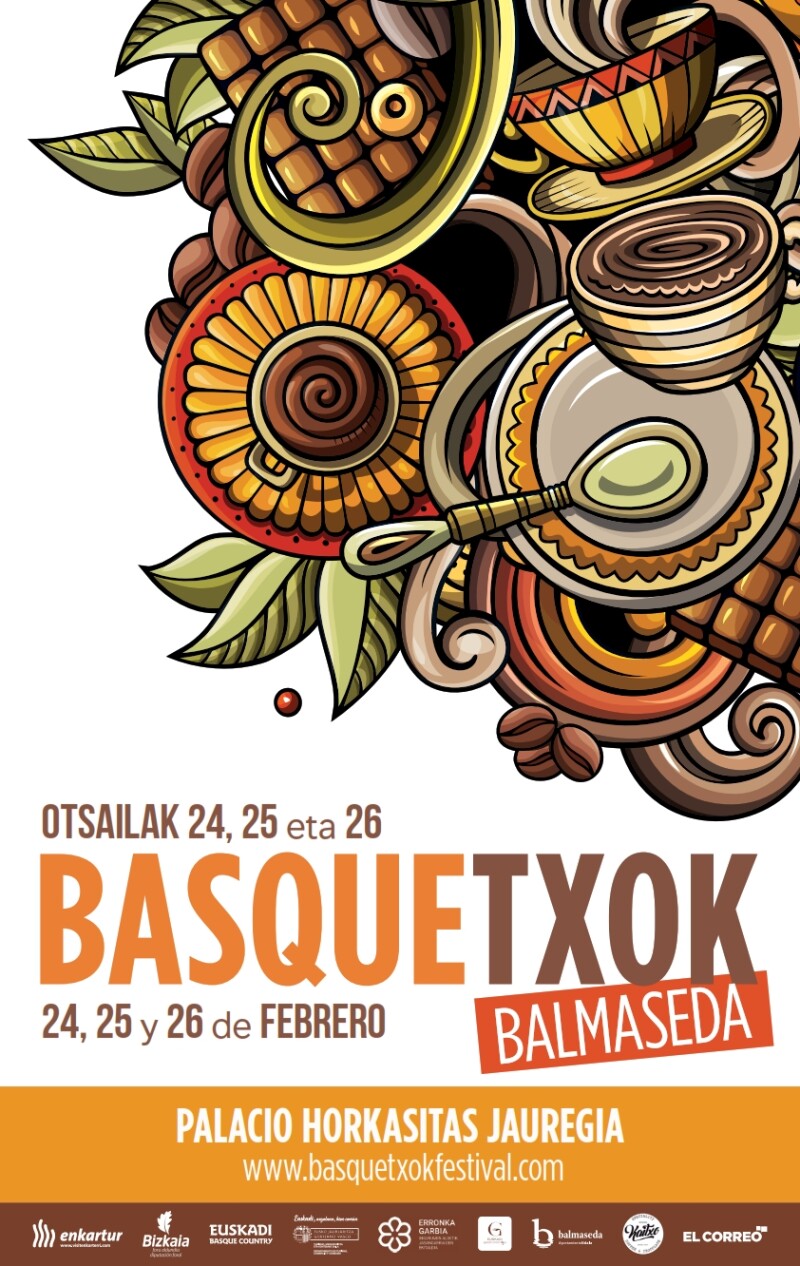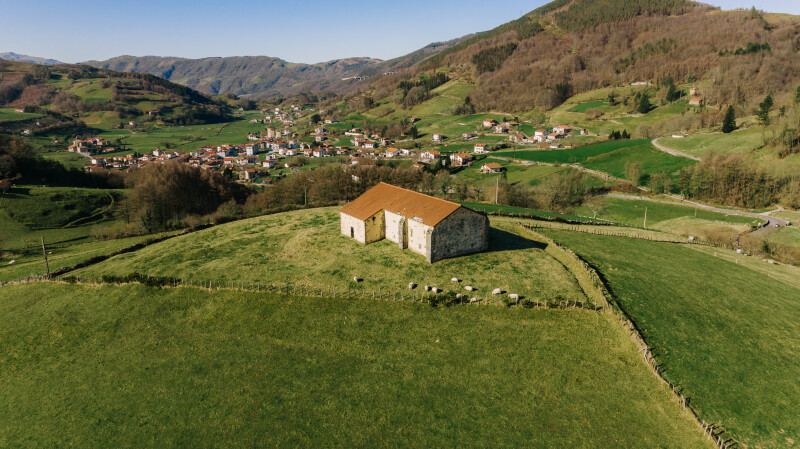The culture of cider in the Basque Country

Existen bastantes interrogantes respecto a cuál fue la procedencia de la manzana y de la sidra en Euskadi. Pero dado que la primera mención sobre los manzanos vascos data de 1024, lo que está claro es que es un elemento clave desde siglos atrás. Hay varias teorías, pero se cree que éstos pudieron haber sido introducidos desde África o gracias a las aves migratorias.
Gran parte de nuestra cultura está ligada a la sidra, era una bebida habitual de los vascos, sobre todo la consumían los marineros como remedio para evitar enfermedades como el escorbuto. Las bodegas iban repletas de barricas de la tan preciada medicina, ya que cada tripulante consumía una media de tres litros de sidra al día. Los caseríos lagares se expandieron por todo el territorio para poder abastecer a toda la población.
El proceso productivo de la sidra comienza a finales de septiembre o comienzos de octubre y se realiza en cinco fases:
- La recolecta de la manzana.
- La trituración y el prensado.
- La elaboración del mosto y la fermentación.
- El embotellado.
- La degustación del producto obtenido.
Las manzanas se recogen de una en una con un instrumento especial llamado kizkia, y hoy en día, se distinguen unos 14 tipos de manzana en el País Vasco.
Con la llegada del maíz y su producción en Euskadi, la elaboración de la sidra cayó en declive. Asimismo, eran cada vez menos los barcos pesqueros que zarpaban reduciendo el consumo de la sidra. Por tanto, la producción y elaboración de la sidra pasó a ser un trabajo secundario, sobre todo en Gipuzkoa, provincia en la que están ubicadas las sidrerías más populares.
La temporada de sidrerías suele ser de enero a abril, y además de degustar la sidra directamente de la barrica, es posible deleitarse con menús tradicionales compuestos por tortilla de bacalao, chuletón y queso Idiazabal.
Para más información sobre el Territorio de la Sidra, puedes consultar el Sagardomapa.
Sagardo Forum
Hoy en día, la sidra sigue siendo fundamental en nuestra cultura, gastronomía y manera de socializar. Así lo demuestran eventos tan importantes como el Sagardo Forum, uno de los acontecimientos más relevantes relacionados con la sidra. Tendrá lugar del 18 al 21 de noviembre de 2021, bajo el lema Sidra y naturaleza, conectando territorios y será la IV Edición. A lo largo de estos cuatro días, se celebrarán:
- Jornadas técnicas. Conferencias sobre el cultivo y la cultura de la manzana, oportunidades de negocio sobre el mundo de la sidra y degustación de sus productos, así como sobre la sidra y el turismo.
- III Concurso de Sidra Internacional. El campeonato tendrá lugar los días 19 y 20 de noviembre de 2021 en Astigarraga (Erribera Kulturgunea). La fecha límite para inscribirse es el 10 de noviembre. Si estás pensando en apuntarte, consulta las bases del concurso.
- II Feria Internacional de la Sidra. Se celebrará el 20-21 de noviembre de 2021 en las instalaciones del Palacio de Congresos Kursaal en Donostia - San Sebastián. Está dirigida tanto al público general como al público profesional.
El Sagardo Forum, reúne cada dos años a los y las profesionales más relevantes de diferentes disciplinas relacionadas con la sidra. Sin duda, es una gran ocasión para compartir y aprender de otras experiencias y trayectorias empresariales. Un espacio perfecto para analizar cómo está la situación actual, así como para ver tendencias y oportunidades de futuro.
Otras actividades relacionadas con la sidra
Si la cultura de la sidra te fascina, a continuación, te damos algunas ideas para exprimirla al máximo:
- Sagardoetxea
Con motivo del 15 aniversario, el Museo de la Sidra Vasca ha organizado durante el mes de septiembre un amplio programa de actividades: talleres en familia, actuaciones musicales, cuentacuentos dibujado… ¡Échale un vistazo e inscríbete en las que más te interesen! - Sagartrekking
Si disfrutas realizando recorridos a pie, el Territorio de la Sidra no te defraudará. ¡Descubre senderos, caseríos y manzanares llenos de color! Tú decides si acompañar o no la experiencia por guías expertos. - Sagarcycling
¿Prefieres pedalear que andar? Pues este plan es para ti, ya que hay una ruta desde Donostia a Astigarraga que podrás recorrer en bicicleta. Una vez llegues al corazón de la sidra, podrás visitar Sagardoetxea, el Museo de la Sidra Vasca y degustar la sidra acompañada por unos excelentes pintxos. ¡Vive en primera persona el rito del txotx!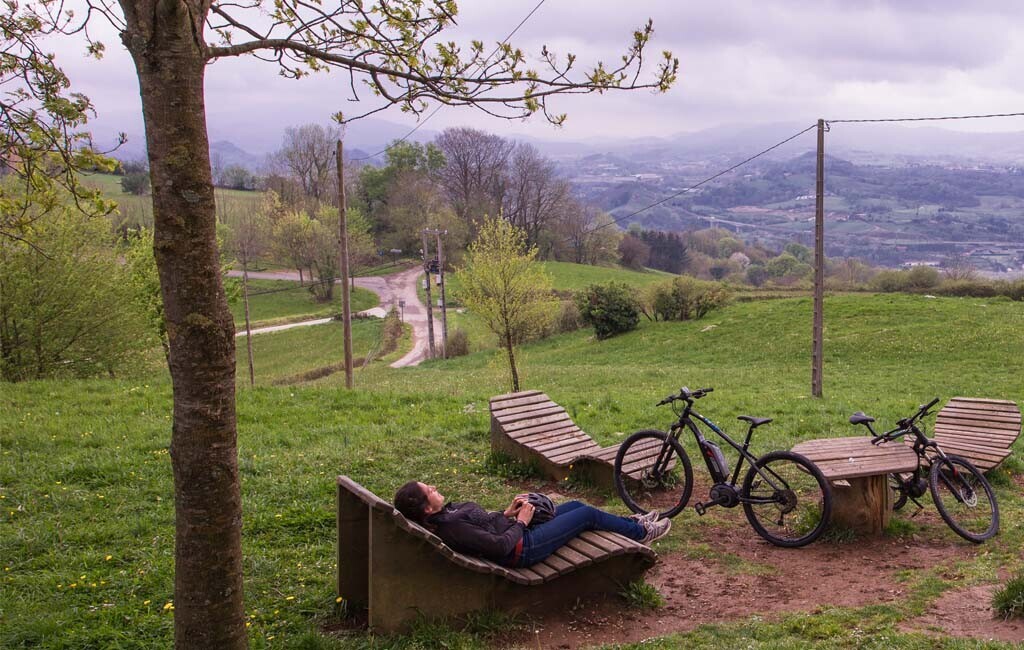
- Canoeing y sidrería
Deporte, gastronomía y cultura vasca a través de un paseo en canoa por el río Urumea. Se trata de una actividad guiada que culmina con la degustación de un menú tradicional de sidrería. ¿Qué más se puede pedir? - Tours
Sagardoaren Lurraldea ofrece todo tipo de tours por los pueblos del Territorio de la Sidra: el camino de la sidra, paseos en bicicleta eléctrica, visitas guiadas por Astigarraga, catas y ¡mucho más! - La ruta de la sidra
Es un recorrido que comienza en Hernani, pasa por Astigarraga y termina en Santiagomendi, uno de los tramos del conocidísimo Camino de Santiago por la Costa. Desde los parajes más verdes a las sidrerías más famosas, en esta caminata te empaparás de nuestra cultura. - La sidra y el mar
Se trata de un plan de un día de lo más completo para conocer de cerca el vínculo de la sidra y el mar. Comienza zarpando desde el puerto de Pasaia con destino a la Factoría Marítima Vasca Albaola, donde encontramos una réplica de un ballenero. Al volver a puerto, el plan continúa con la visita a Sagardoetxea, y finaliza con una cena en una sidrería típica. ¿Se te ocurre un plan mejor?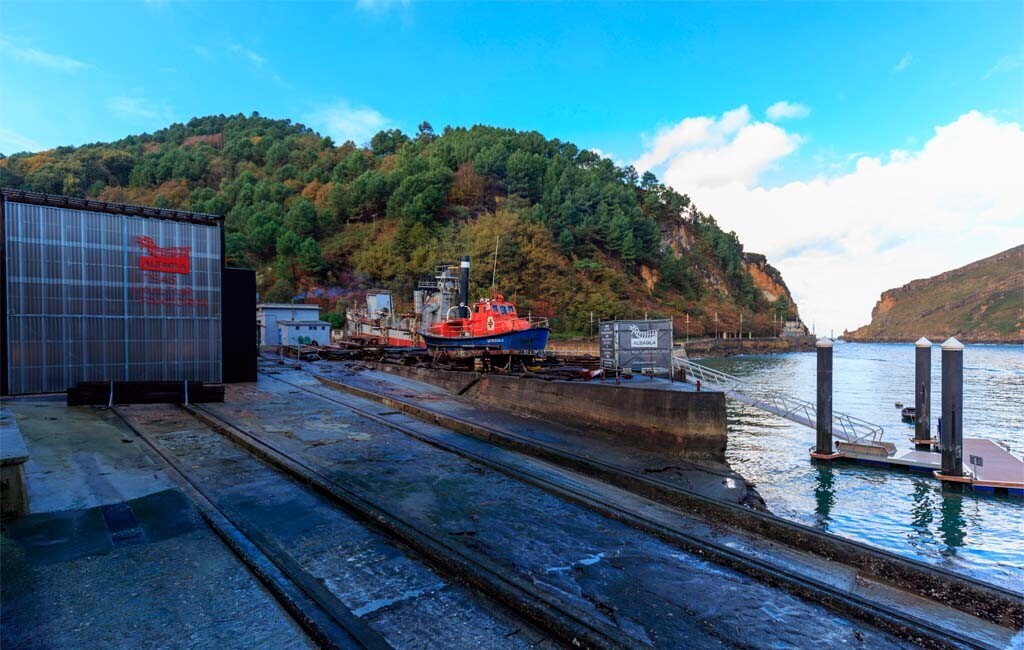
- Talleres
Sagardoaren Lurraldea organiza talleres relacionados con la sidra y la recolecta de la manzana durante todo el año, consulta su agenda y no te pierdas la oportunidad de vivir experiencias únicas en familia, con amigos o en pareja. - Remo y sidrería
Si siempre has soñado con ser remero/a, ¡ésta es tu oportunidad! Recorrerás la ría Oria en una trainera guiado por un monitor/a, y al terminar, te deleitarás con un rico menú de sidrería. - Día de la sidra
Son varias las poblaciones que celebran el Sagardo Eguna (día de la sidra), pero aquí te indicamos las más destacadas: - Sagardo Eguna en Usurbil (mayo)
- Sagar Uzta en Astigarraga (septiembre)
- Día de la manzana y la sidra en Hernani (septiembre)
- Sagardo Eguna en Donostia (septiembre)
- Te recordamos que durante los últimos dos años algunos de estos eventos no se han podido celebrar debido a las restricciones sanitarias; por tanto, si tienes previsto acudir, recuerda buscar información actualizada.
Como puedes ver, tienes muchas formas de conocer la cultura de la sidra de manera práctica: produciéndola, degustándola e incluso recorriendo los pasos de los primeros elaboradores vascos. ¿Con cuál te animas?
here are many questions about the origin of apples and cider in the Basque Country. Since the first mention of the Basque apple trees dates back to 1024, what is clear is that they were a key element for centuries. There are several theories, but it is believed that these may have been introduced from Africa or thanks to migratory birds.
Much of our culture is linked to cider. It was a common drink among the Basques, especially sailors who used it as a medicine to prevent diseases like scurvy. The cellars were full of barrels of this highly prized medicine, as each crew member consumed an average of three liters of cider a day. The wine villages were expanded throughout the territory to be able to supply the entire population.
The cider production process starts in late September or early October and is carried out in five stages:
- Apple picking.
- Grinding and pressing.
- Preparation of the must and fermentation.
- Bottling.
- Tasting of the obtained product.
Apples are picked one by one with a special instrument called kizkia, and today there are about 14 types of apples in the Basque Country.
With the arrival of corn and its production in the Basque Country, cider production declined. Likewise, fewer and fewer fishing boats were sailing, reducing cider consumption. In this way, cider production and preparation have become a secondary job, especially in Gipuzkoa, the province where the most popular cider houses are located.
The cider season usually runs from January to April and, in addition to tasting cider directly in the barrel, it is possible to enjoy traditional menus consisting of cod tortilla, ribeye and Idiazabal cheese.
For more information about the Territory of Cider, you can consult the Sagardomapa.
Sagardo Forum
Nowadays, cider continues to be fundamental in our culture, gastronomy, and way of living. This is demonstrated through events as important as the Sagardo Forum, one of the most relevant celebrations related to cider. It will be held from November 18th to 21st, 2021, under the motto Cider and nature, connecting territories, and will be the IV Edition. Over these four days, the following will be celebrated:
- Technical talks. Conferences regarding apple culture and cultivation, business opportunities in the cider world and tasting of its products, as well as about cider and tourism.
- III International Cider Competition. The competition will take place on November 19th and 20th, 2021 in Astigarraga (Erribera Kulturgunea). The deadline for registration is November 10th. If you are thinking about registering.
- II International Cider Fair. It will be held from November 20th to 21st, 2021 at the Kursaal Congress Center in Donostia - San Sebastián. It is aimed at the general public and the professional public.
Every second year, the Sagardo Forum brings together the most relevant professionals from diverse disciplines related to cider. Without a doubt, it is an excellent opportunity to share and grasp from other experiences and business trajectories. A perfect space to analyse the current situation, as well as see forthcoming trends and opportunities.
Other activities related to cider
If cider culture fascinates you, hither are some ideas for making the most of it:
- Sagardoetxea
On the occasion of the 15th anniversary, the Basque Cider Museum organized an extensive program of activities during the month of September: family workshops, musical presentations, drawn storytellers... Take a look and subscribe to the ones that interest you the most! - Sagartrekking
If you like walking, the Cider territory will not disappoint you. Discover colorful trails, farms, and apple orchards! You decide whether to accompany the experience with specialized guides or not. - Sagarcycling
Do you prefer cycling than walking? Then this plan is for you, as there is a route from Donostia to Astigarraga that you can take by bicycle. Once you get to the heart of cider, you can visit Sagardoetxea, the Basque Cider Museum, and taste cider accompanied by excellent pintxos. Live the txotx rite in the first person!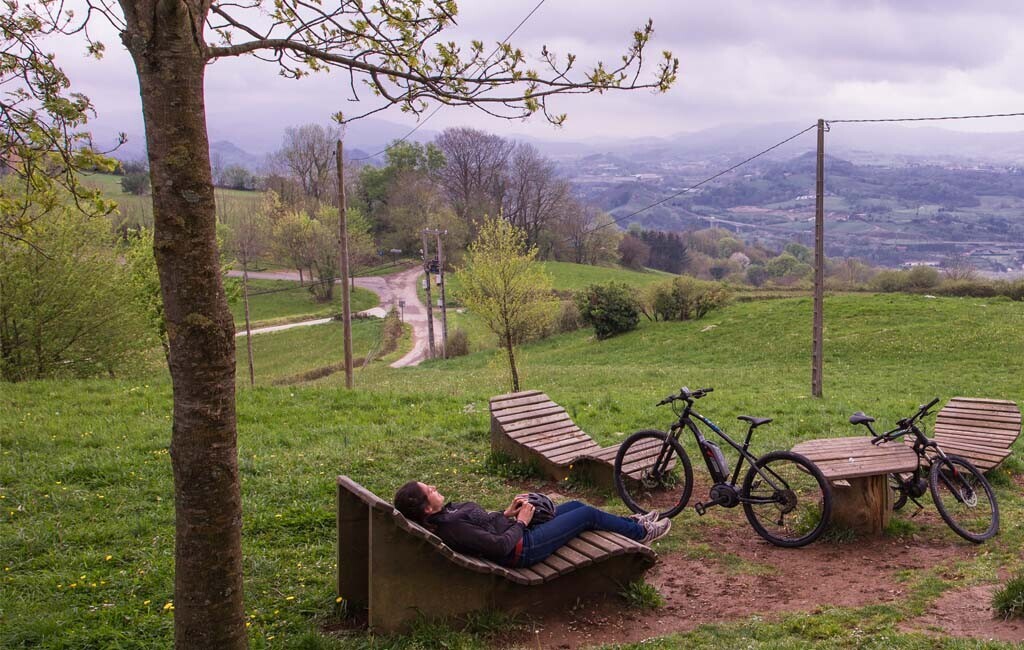
- Canoeing and Cider house
Sport, gastronomy, and Basque culture on a canoe trip on the Urumea River. It is a guided activity that culminates with tasting a traditional cider house menu. What else can you ask for? - Tours
Sagardoaren Lurraldea offers all kinds of tours through the villages of the Territory of Cider: the cider path, electric bike tours, guided tours in Astigarraga, tastings, and much more! - The cider route
It is a route that starts in Hernani, passes through Astigarraga, and ends in Santiagomendi, one of the stretches of the well-known Camino de Santiago along the coast. From the greenest places to the most famous cider houses, in this walk, you will immerse yourself in our culture. - The cider and the sea
It's a comprehensive one-day plan to learn about the connection between cider and the sea. It starts from the port of Pasaia to the Basque Maritime Factory in Albaola, where we find a replica of a whaler. On the way back to port, the plan continues with a visit to Sagardoetxea and ends with dinner in a typical cider house. Do you have a better plan?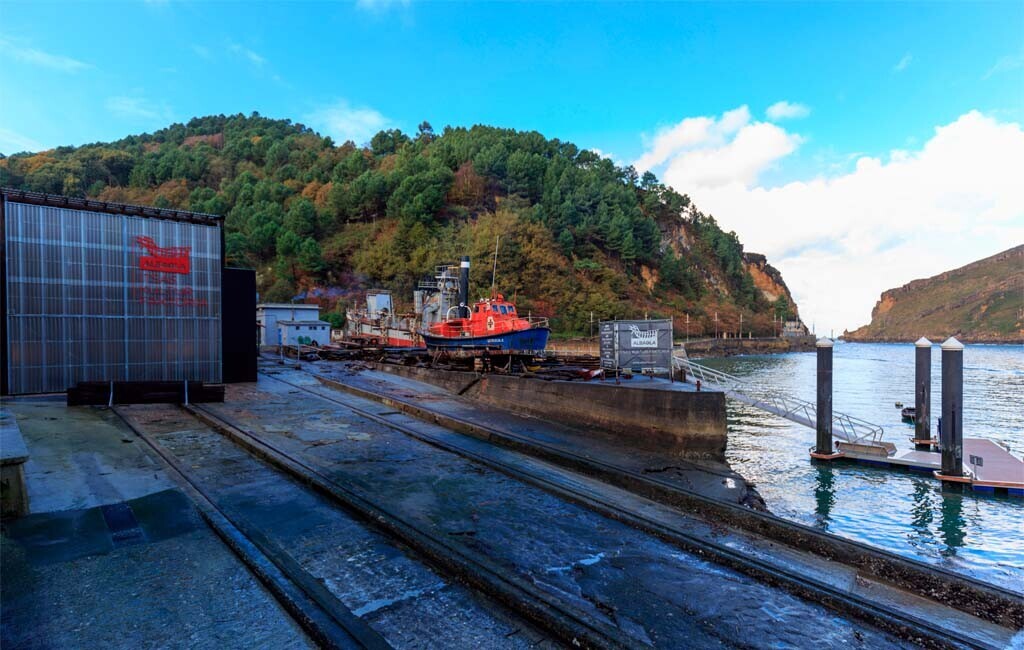
- Workshops
Sagardoaren Lurraldea organizes workshops related to cider and apple picking throughout the year. Check their schedule and don't miss the opportunity to live unique experiences with your family, friends, or as a couple. - Rowing and cider house
If you've always dreamed of being a rower, this is your chance! You'll travel along the Oria estuary on a trawler guided by an instructor, and at the end, you'll delight yourself with the delicious menu of the cider house. You'll travel along the Oria estuary on a trawler guided by an instructor, and at the end, you'll delight yourself with the rich menu of the cider house. - Cider day
There are several places that celebrate the Sagardo Eguna (day of cider), but here we indicate the ones that stand out the most:- Sagardo Eguna in Usurbil (May)
- Sagar Uzta in Astigarraga (September)
- Apple and Cider Day in Hernani (September)
- Sagardo Eguna in Donostia (September)
We recall that in the last two years some of these events were not possible due to sanitary restrictions; therefore, if you plan to go, remember to look for up-to-date information.
As you can see, there are many ways to get to know the cider culture in a practical way: producing it, tasting it, and even walking in the steps of the first Basque producers. Which one do you dare?
